How Dangerous Are Russia’s New Kamikaze Drone Jets?
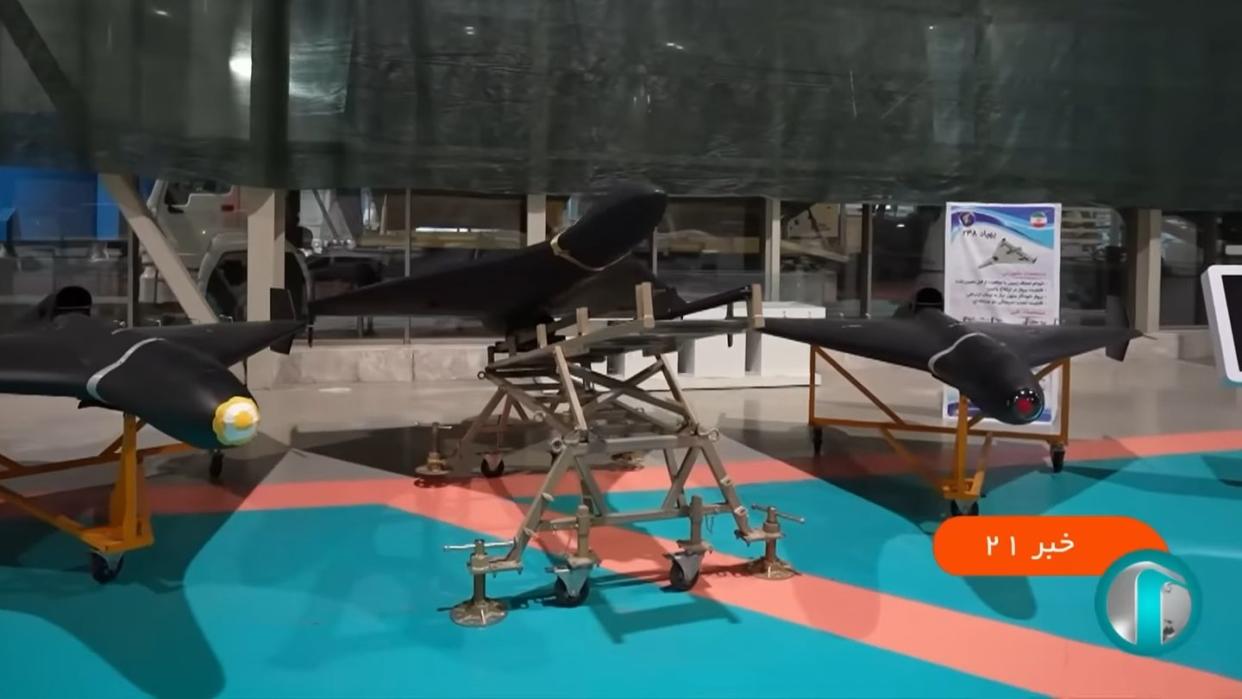
Since September of 2022, Russia has launched nearly 4,000 Shahed-136 and Shahed-131 kamikaze drones at targets across Ukraine. These cheap, long-range weapons of (mostly) Iranian manufacture are estimated to cost merely $20,000 to $40,000 each. And Russia anticipates, perhaps ambitiously, that a new domestic factory will churn out 6,000 of the drones annually by 2025.
Fortunately, the piston-engine Shaheds (or Geran-2s per Russian designation) are very slow, with a cruising speed of 110 miles per hour. On some days, Ukrainian air defenses report shooting down every Shahed drone launched, mostly using anti-aircraft guns.
However, on January 8, a Ukrainian military Telegram account posted images of a jet motor recovered from a wrecked Shahed in Ukraine that revealed Russia was now deploying—or at least operationally testing—a jet-powered Shahed variant. This is believed to be an Iranian Shahed-238, a type the country unveiled last Fall.
/1. Wreckage of the Shahed shot down in Ukraine with a jet engine installed. This is the first known case of their use.https://t.co/lY3Js7yPH4 pic.twitter.com/AwlvBrDAmz
— Special Kherson Cat 🐈🇺🇦 (@bayraktar_1love) January 8, 2024
In early December of 2022, Russian general Vladimir Popov announced that a jet-powered kamikaze drone would soon be used over Ukraine, and further claimed it had a maximum speed of 500 miles per hour. (Some other sources claim the speed is “above 500 kilometers per hour”, ie. 310 miles per hour).
The engine seemingly resembles the Iranian TEM Tolue-10 turbojet motor, which itself is illegally copied from a 39-pound Czech TJ100 engine that generates up to 281 pounds of thrust and was developed for use by both drones and DIY home-built aircraft. The Iranian knockoff has already been fitted to the country’s Ya’ali and Quds-1 cruise missiles.
The intake assembly recovered from the wreckage appears to be near identical to the intake assembly of the displayed Shahed-238 model. pic.twitter.com/vMF8leIOEL
— John Ridge 🇺🇸 🇺🇦 (@John_A_Ridge) January 8, 2024
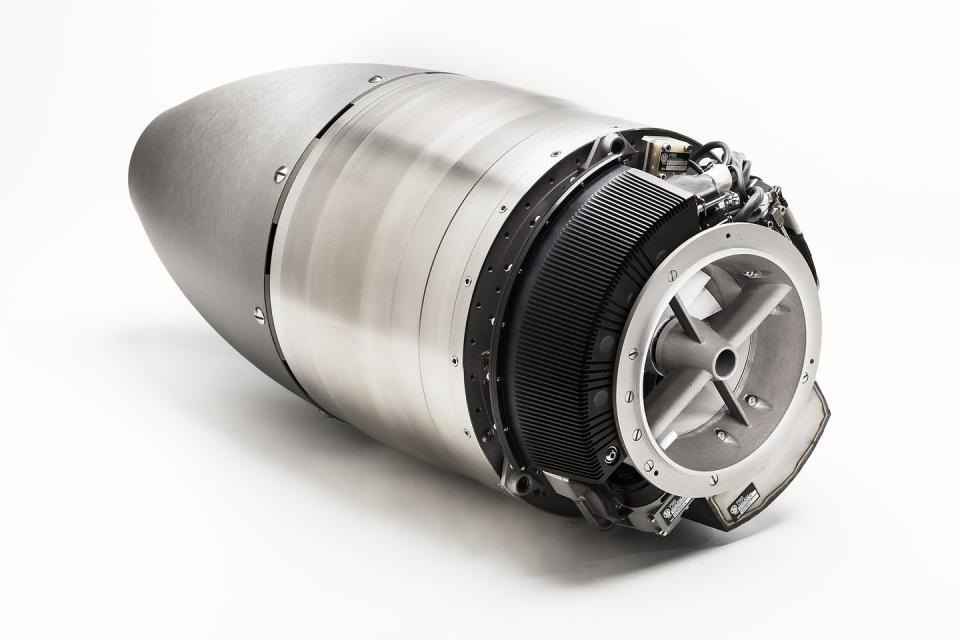
By fitting a jet engine to a kamikaze drone, Iran has effectively refashioned it into a cruise missile reminiscent of the V-1 ‘Buzz bombs’ that Hitler used to bombard London, Antwerp, and Brussels late in World War II.
Unfortunately, much greater speed makes the drone a more challenging target—it reduces the early warning time and engagement windows for Ukraine’s short-range air defenses considerably, and likely requires an increased use of costly missile-based defenses instead of more affordable gun-based systems. But the jet-powered drones future impact will depend on how cost-efficient it is to produce.
Assessing the Shahed-238
Development of a jet-powered Shahed spinoff was first revealed in the Iranian state media documentary Parchamdar (“Flagship”) in September of 2023, which featured footage of an apparent test strike.
🔥 انتشار برای نخستینبار؛ نسل جدید پهپادهای انتحاری شاهد مجهز به موتور مینیجت pic.twitter.com/ScgiYrVueG
— MESHKAT (@projectmeshkat) September 26, 2023
Then, on November 19, three different Shahed-238 models were unveiled at a university aerospace exhibition of the Iranian Revolutionary Guard Corps (IRGC) in Tehran.
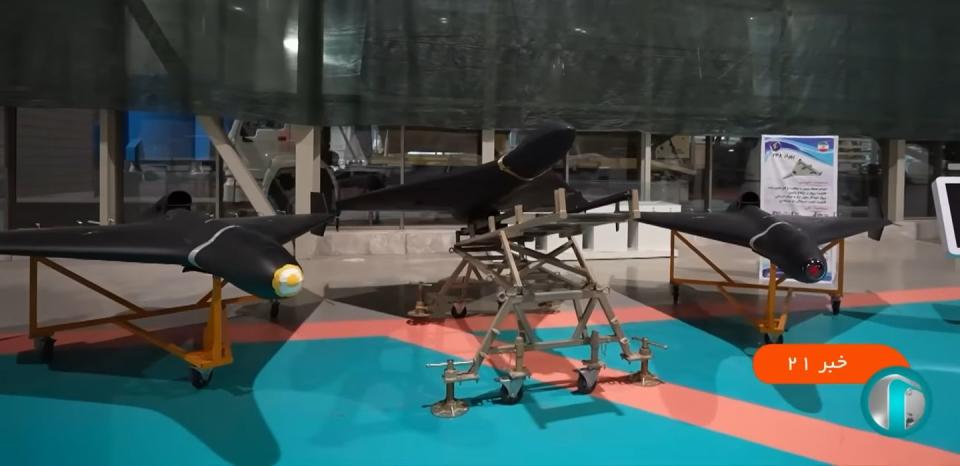
Though the (likely standard) low-cost model uses satellite- and inertial-navigation for attacks on fixed targets, the two other variants are believed to include an optical/infrared-guidance sensor for engaging onto moving targets and some-kind of radar seeker.
The exact nature of these variants is unclear. The EO/IR sensor could be to assist remote control by a human operator within radio-control rage, or be designed to lock on automatically to a heat source. Likewise, the radar-equipped model could be designed for autonomous targeting, or be a home-on-radar system that locks onto the emissions of air defense radars.
While the original Shahed-136 was also offered with more flexible guidance methods, Russia has primarily used the cheapest fixed-target version for strategic attacks. Of course, the improved penetration odds and new nose-mounted sensors of the speedier Shahed-238 could see it used in different ways.
Footage from Parchamdar shows the Shahed-238 being launched from a moving truck—though, presumably, it could also be catapult launched with rocket boosters from static launchers.
The Parchamdar (flagship) documentary gives another look at this new jet powered Shahed-136 loitering munition variant with an EO ball
• Would serve as Iran's "high end" more expensive loitering munition, with jet engine & EO ball for locating targets https://t.co/tvwomdt9tZ pic.twitter.com/WLEOUM6LNv— Iran Defense|نیروهای مسلح جمهوری اسلامی ایران (@IranDefense) November 12, 2023
Interestingly, this earlier footage appears to show a fourth Shahed-238 variant equipped with an optical/infrared ball turret camera under its chin, which would make it much more effective for remote-control operations and reconnaissance missions.
How cost-efficient is the Shahed-238?
While the Shahed-238 poses unwelcome new challenges for Ukraine’s air defenses, the key question is just how much they cost and how easily Iran or Russia can churn out their miniature jet engines.
Jet engines are pricier than piston engines, and requires more robust heat-tolerant furnishings. For example, as of early January, a Czech TJ100 engine is priced at nearly $70,000 dollars—by itself the price of two or three Shahed-136 drones. Its Iranian clone may be cheaper, but only up to a point.
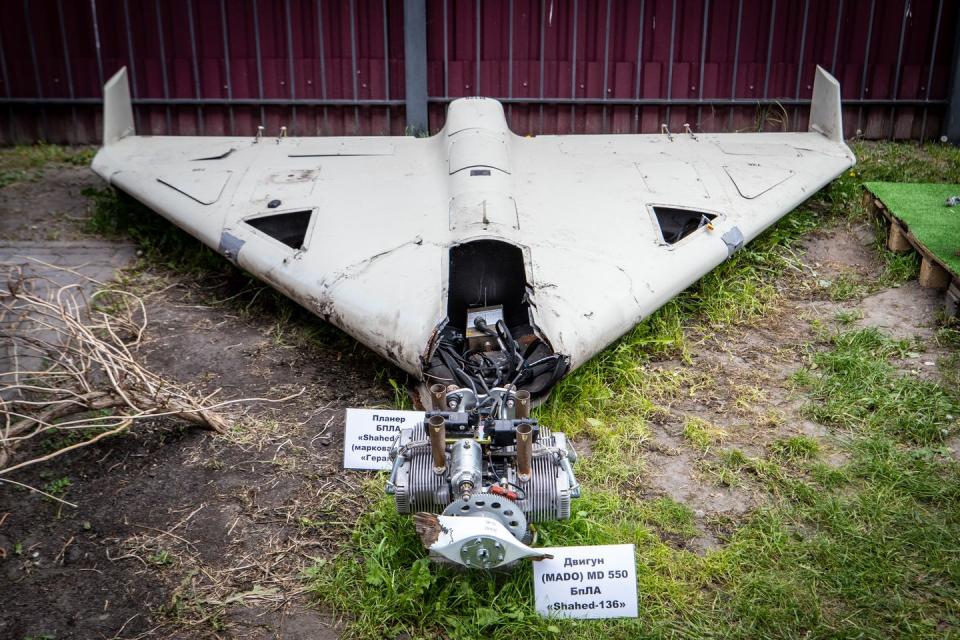
That means the Shahed-238 assuredly costs much more than a Shahed-136, cutting into one of the originals’ primary advantages—it’s shear expendability.
The unit price is likely to be at least $80,000-$100,000 per drone—though considerably higher is possible as well—and even more for Shahed-238s variants with more capable sensors seekers.
The Shahed’s up-to-1,600-mile range would also likely be diminished, as turbojet propulsion is less fuel efficient. Admittedly, a reduced range would likely acceptable to Russia—while it would constrain options, Shaheds can be launched from many different areas near Ukrainian-controlled territory. It’s also possible the Shahed-238’s designer sought to compensate by either expanding fuel tanks, trimming weight away from other components like the warhead, or swapping standard materials for more expensive lightweight plastics.
Lastly, while substituting the Shahed-136’s propeller with a jet intake should reduce the Shahed-238’s radar cross section, its turbojet will considerably increase thermal signature.
Ultimately, to be advantageous, the Shahed-238s must either achieve a higher penetration rate of Ukrainian defenses or absorb a higher value of air defense missiles to make up for the fact that the same money could have bought four or five (if not many more) Shahed-136s drones.
Unfortunately, it seems likely that Shahed-238s will still cost much less than Russia’s Kh-101 and Kalibr land-attack cruise missiles. Those types cost one to two million-dollars each, as they also have much bigger warheads and more sophisticated navigation systems.
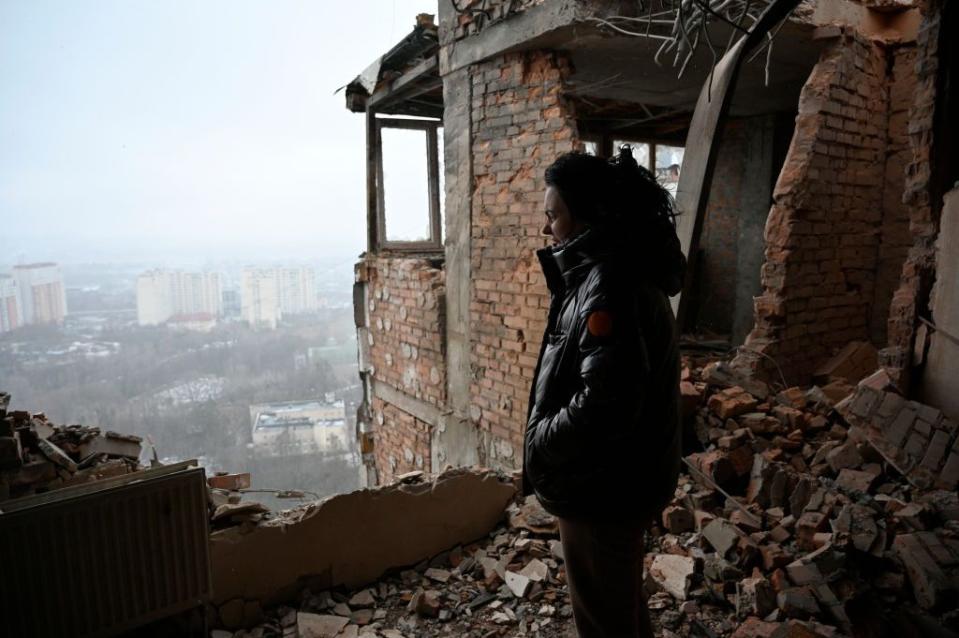
For now, it’s unclear how many Shahed-238s have been built, and how quickly Iran and/or Russia can crank them out. While international sanctions have not stopped Iran and Russia from acquiring necessary foreign-built components (particularly engines, navigation systems, and sensors), they do make obtaining those components more expensive and the supply less reliable and consistent.
If the Shahed-238 is deemed effective, Russia may look to establish a domestic production line of an indigenous model, likely with some substituted domestic components. However, doing so may take many months.
Ukraine, meanwhile, will have to assess whether it can deal with Shahed-238s without expending its most valuable air defense weapons, like the Patriot and S-300 missiles.
The questions surrounding Russia’s latest Iranian-devised killer drones, therefore, reflect that the war in Ukraine is at once a war of high-speed technical and tactical innovation, and one of rival military-industrial production capacities spread out across both the warring nations and their international allies.
You Might Also Like

